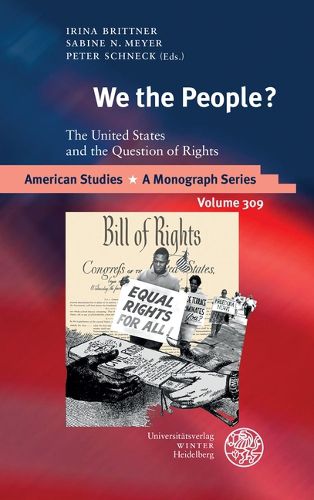Readings Newsletter
Become a Readings Member to make your shopping experience even easier.
Sign in or sign up for free!
You’re not far away from qualifying for FREE standard shipping within Australia
You’ve qualified for FREE standard shipping within Australia
The cart is loading…






The foundational vision of the U.S. polity as a political edifice of liberty and equal rights (Abraham Lincoln) has held immense symbolic power and bred both aspirations and discontent. It has served as the source for various interconnected, yet often also conflicting, narratives and discourses through which the question of human and civil rights in the U.S. has been constantly debated and re-negotiated. This volume investigates the U.S.-American culture of rights as it has evolved and continues to evolve throughout U.S. (legal) history as well as in U.S. literature and in popular culture. It demonstrates that the question of rights has been posed differently by members of the various groups and cultures that have historically constituted the United States, and that the answers to these questions changed significantly over time.
$9.00 standard shipping within Australia
FREE standard shipping within Australia for orders over $100.00
Express & International shipping calculated at checkout
The foundational vision of the U.S. polity as a political edifice of liberty and equal rights (Abraham Lincoln) has held immense symbolic power and bred both aspirations and discontent. It has served as the source for various interconnected, yet often also conflicting, narratives and discourses through which the question of human and civil rights in the U.S. has been constantly debated and re-negotiated. This volume investigates the U.S.-American culture of rights as it has evolved and continues to evolve throughout U.S. (legal) history as well as in U.S. literature and in popular culture. It demonstrates that the question of rights has been posed differently by members of the various groups and cultures that have historically constituted the United States, and that the answers to these questions changed significantly over time.